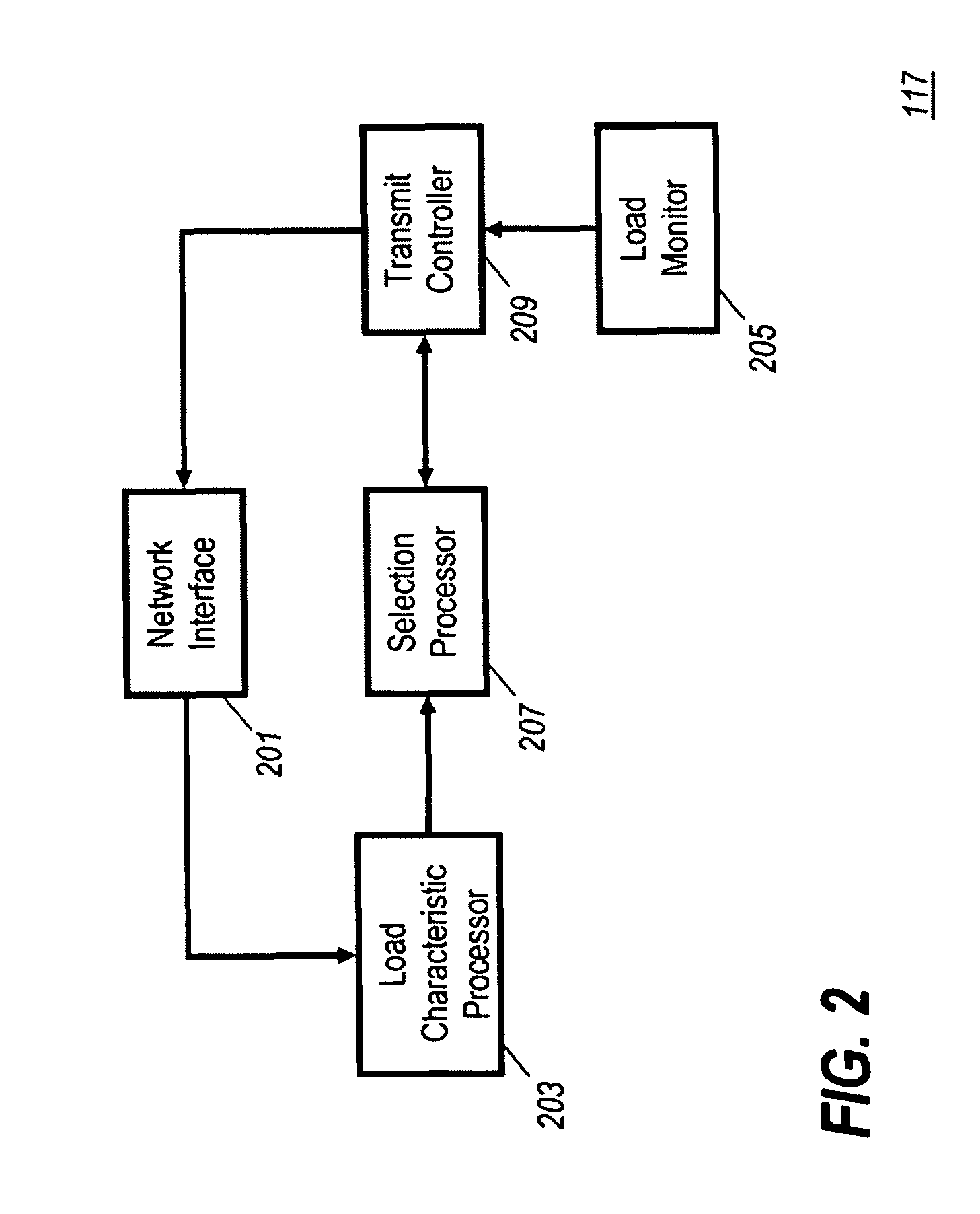Load management for a mobility management entity of a cellular communication system
a technology a load management technology, applied in the field of load management of a mobility management entity can solve the problems of inability to dynamically adjust the load distribution to the specific conditions experienced, the load may be overloaded, and the processing required may exceed the available computational or memory resources, so as to improve the load distribution of mmes, improve the performance of a cellular communication system, and improve the effect of capacity
- Summary
- Abstract
- Description
- Claims
- Application Information
AI Technical Summary
Benefits of technology
Problems solved by technology
Method used
Image
Examples
Embodiment Construction
[0027]The following description focuses on embodiments of the invention applicable to a Long Term Evolution (LTE) system. However, it will be appreciated that the invention is not limited to this application but may be applied to many other cellular communication systems.
[0028]FIG. 1 illustrates an example of elements of a cellular communication system in accordance with some embodiments of the invention.
[0029]The LTE system of FIG. 1 comprises a number of LTE base stations 101-107 (also known as evolved Node B's eNB's) each of which supports user equipments 109-113 in a cell served by the base stations 101-107. In an LTE system, the base stations comprise significant functionality for controlling the air interface communications with the user equipments including functionality for resource allocation, attachment control, handover operation etc.
[0030]Specifically, for LTE the Radio Access Network (RAN) consists of a single node, (the base station or eNB) which interfaces with the us...
PUM
 Login to View More
Login to View More Abstract
Description
Claims
Application Information
 Login to View More
Login to View More - R&D
- Intellectual Property
- Life Sciences
- Materials
- Tech Scout
- Unparalleled Data Quality
- Higher Quality Content
- 60% Fewer Hallucinations
Browse by: Latest US Patents, China's latest patents, Technical Efficacy Thesaurus, Application Domain, Technology Topic, Popular Technical Reports.
© 2025 PatSnap. All rights reserved.Legal|Privacy policy|Modern Slavery Act Transparency Statement|Sitemap|About US| Contact US: help@patsnap.com



